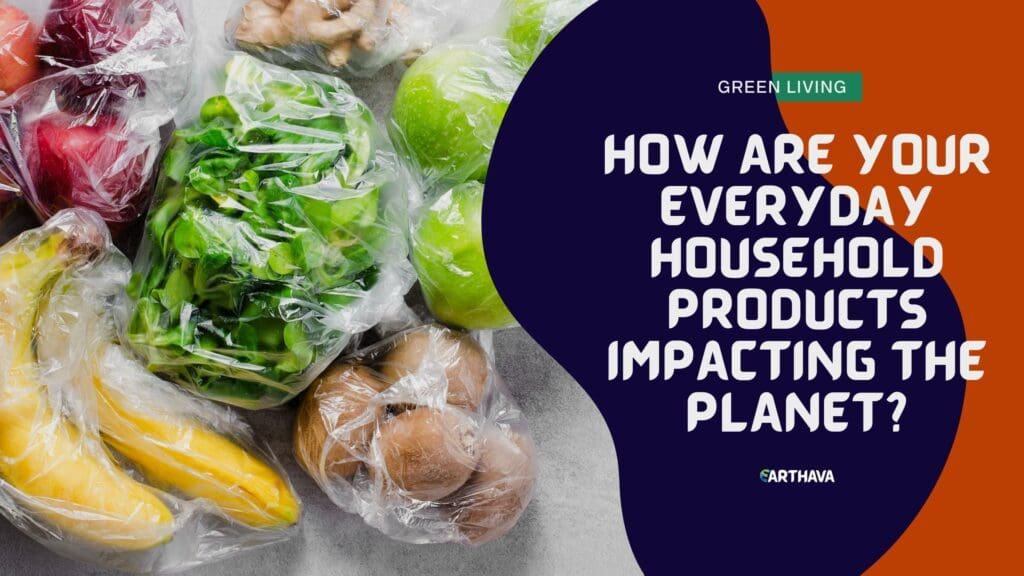When you make your weekly grocery trips, you likely stock up on the same household supplies. It’s important to make sure your home has everything you and your family need, but sometimes what you buy might hurt the environment.

Many people assume that standard household products are safe because they’ve passed regulations or have been around for decades. Even though they’re okay for daily use, that doesn’t mean they’re good for the planet.
If you’ve ever wondered how your everyday household products impact the planet, read this guide. Once you learn their effects, you can switch them out with safer green products.
Single-Use Plastics Create Pollution
Convenience is one of the most significant driving factors of innovation. More consumers will buy a product if it makes life easier, like single-use plastics. Plastic bags at grocery stores are a great example of this. They help you transport your groceries, and then you throw them out when you get home.
After you throw out those plastic bags, they wash out into the ocean from landfills and local dumps. The Atlantic Ocean alone collects 300 million plastic bags every year. Curious or hungry animals eat these bags or get caught in them, which can lead to injury or worse.
Coffee pods are another household product that many people use. You can’t recycle them because they’re too small, so they pile up in landfills where the plastic decays into microplastics that spread into the soil, waterways, and plant life. Unless you buy specialty pods designed with recycling or biodegradability in mind, your coffee habit could add to environmental pollution.
Microbeads Contaminate Waterways
Think about how often you use toothpaste or wash your face. You likely use these products multiple times per day, but they contain microbeads that contaminate waterways. Check your usual products and look for these common ingredients:
- Polypropylene (PP)
- Polyethylene (PE)
- Polyethylene terephthalate (PET)
- Nylon (PA)
- Polymethyl methacrylate (PMMA)
When these ingredients wash into the water, they break down into microbeads. These beads harm any humans or animals that ingest them because they’re microplastic. Even if they get into your local waterways, they’ll impact the water purity and make it less safe to use in restaurants, bars, coffee shops, and households.
Sprays Produce Greenhouse Gases
Spray-on deodorants and air freshener cans make it easy to smell great and live in a home without odors, but they also produce greenhouse gases. They’re both aerosol sprays that release chemicals into the atmosphere. Aerosols can suppress precipitation or intensify storms, depending on how much is in the air. They also contain hydrocarbon and compressed gasses, which contribute to carbon in the atmosphere.
Switch to green products designed with the environment in mind. It may take a few tries to find a natural deodorant or air freshener you enjoy, but it will help you contribute less to the greenhouse gases harming the planet.
Electronics Leave Environmental Footprints
Consider how often you use your phone, laptop, or smart TV to use the internet. Whenever you stream a show or check your Twitter feed, you rely on networks to distribute the content you want. The communication technology sector is on track to consume up to 51% of the world’s electricity by 2030, which accounts for CO2 emissions that speed up climate change.
Energy-consuming products go beyond standard electronics, too. Aquariums, washers and dryers, and your sprinkler system all need electricity to function. You can minimize your carbon footprint when you estimate your home energy use and determine what’s consuming the most power. Use these electronics less often or unplug them when you don’t need them.
Find Alternative Green Products
The environmental effects of these everyday household products may surprise you, but there are always green products you can use instead. Switch to a smart TV designed to use less electricity. Buy biodegradable coffee pods and organic personal hygiene products. You can maintain your lifestyle and reduce your carbon footprint with the help of new green products and an informed perspective on what you buy.


